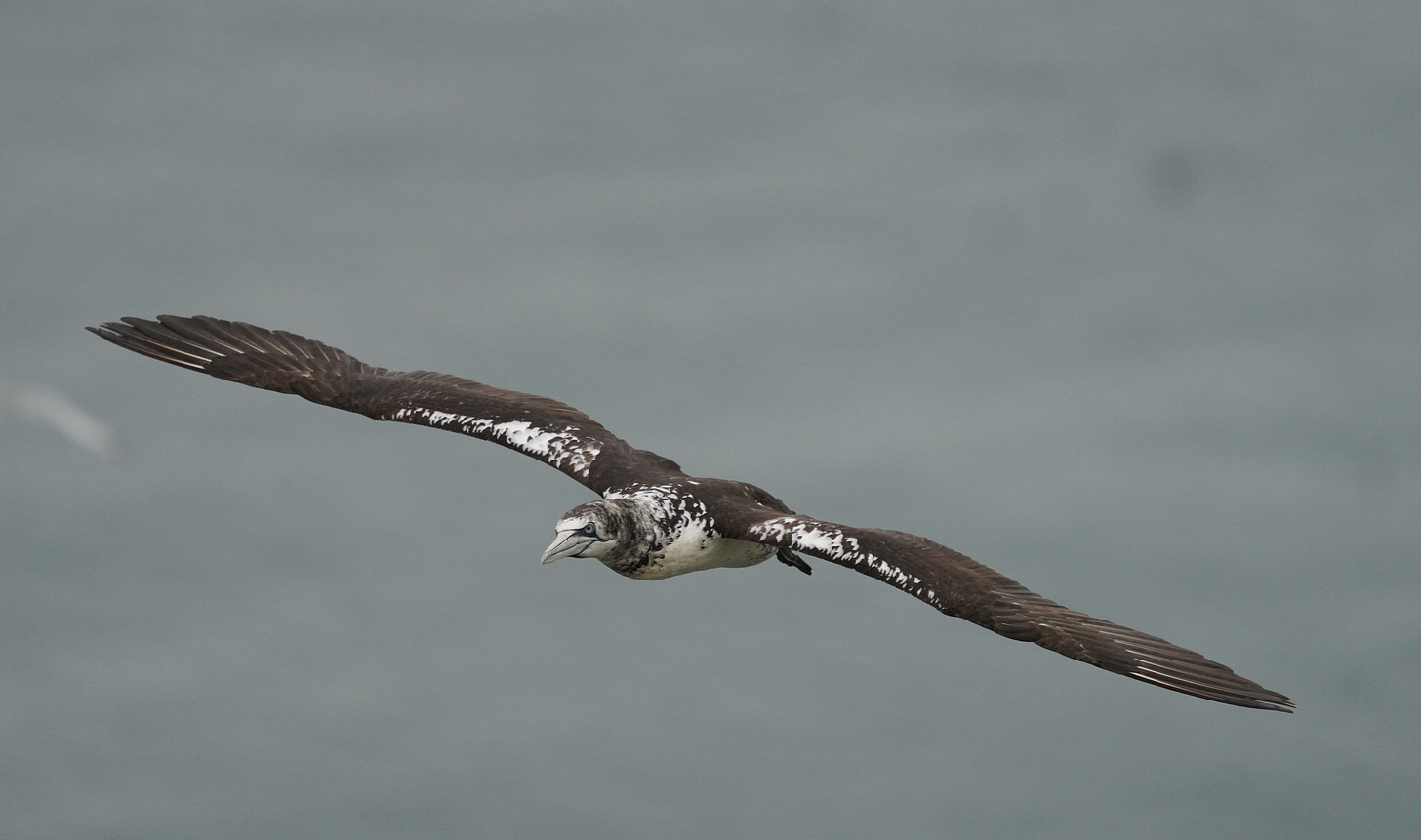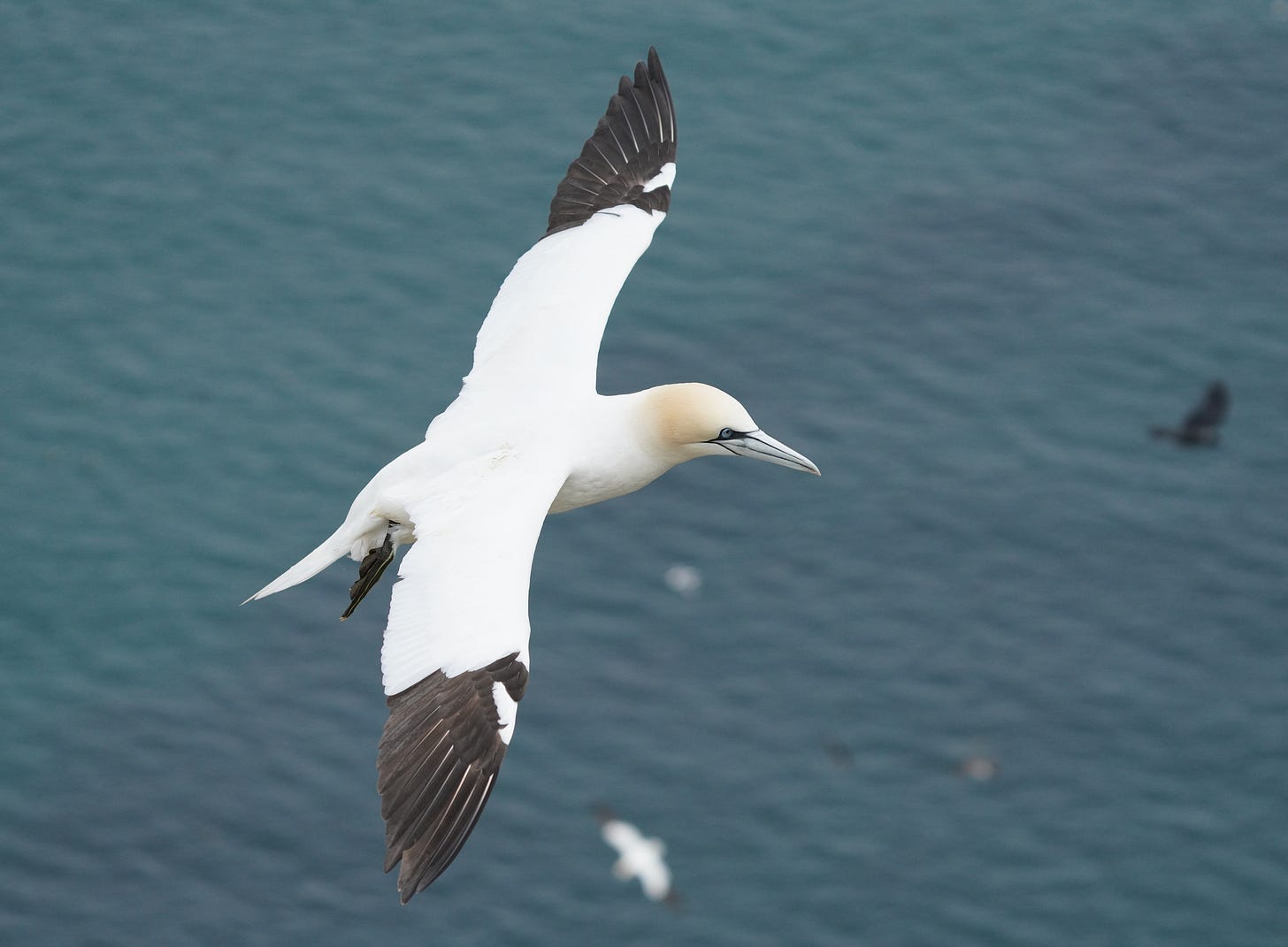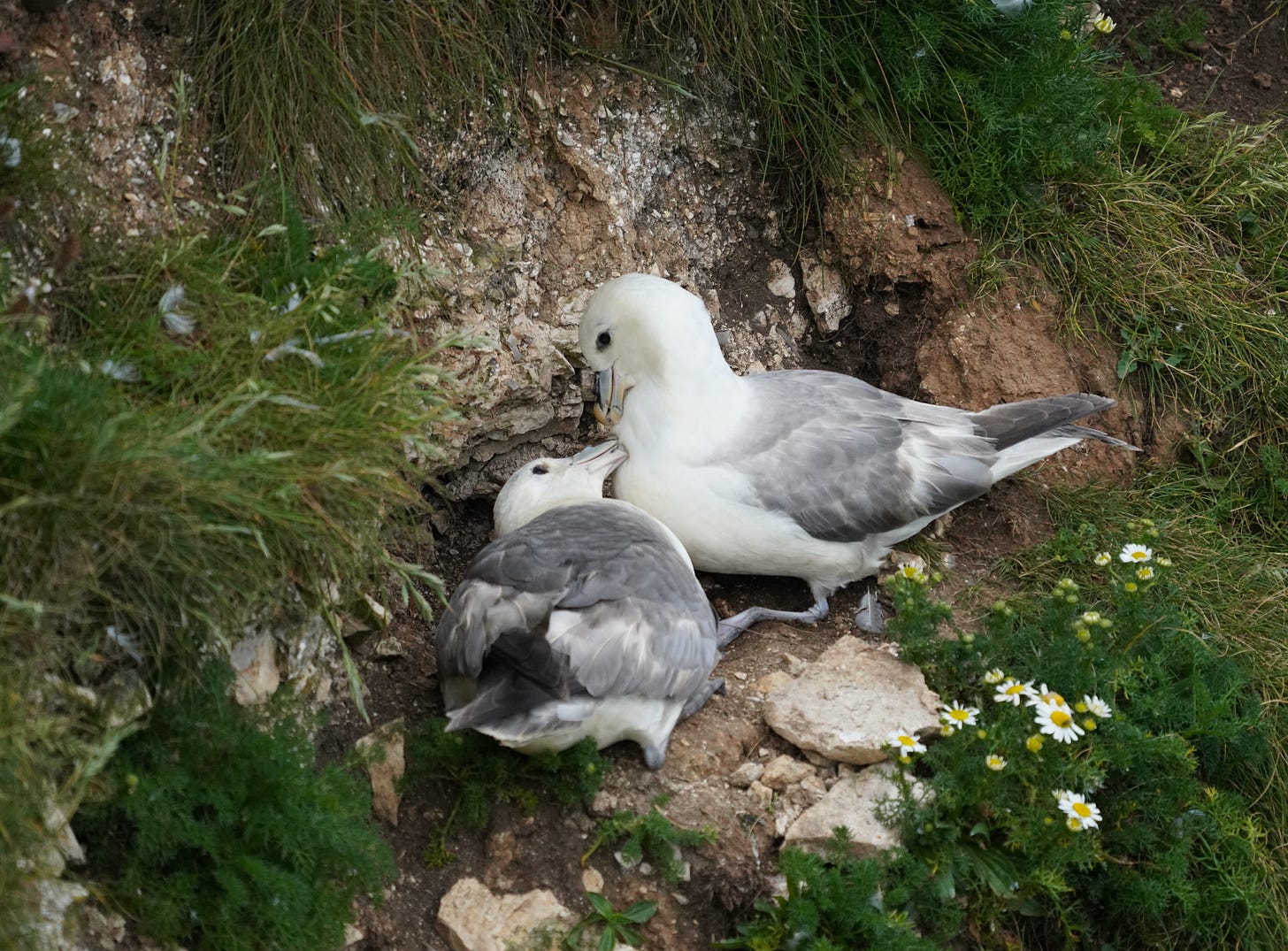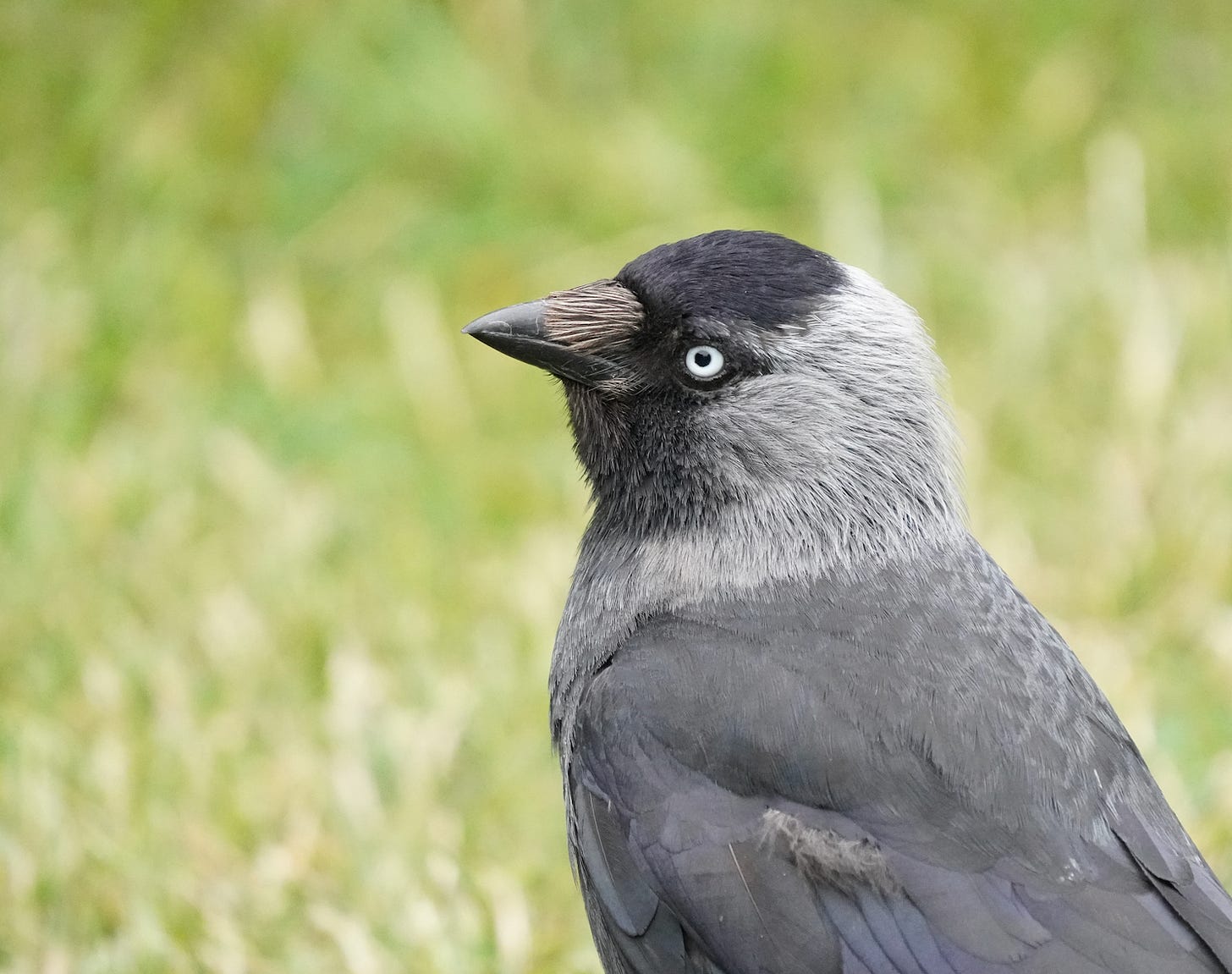Your weekly wander with wildlife (Friday 20 June)
A clifftop walk with magical seabirds.
This week, we’re visiting place I have been dying to write about here from the very beginning. There are some places so magical that you wish you could experience your first visit all over again. Bempton Cliffs in Yorkshire is one of them.
As you may know, I try not to post anything that you’d have to pay to see. While Bempton Cliffs is free to RSPB members, there’s a fee for non-members over 24 years of age. But the cliffs extend south of the reserve, so you can head up from Bridlington and see all these wonderful birds for nothing. Bonus points, you’re much more likely to see seals in the harbour there, too!
I’m currently at a Wetland reserve that I can’t wait to tell you about next week, so this is a recollection of my visit to Bempton Cliffs in this week of 2023.
Seabird spectacular
During the warmer months, Bempton Cliffs is home and nursery to thousands of seabirds: Gannets, Razorbills, Guillemots, Fulmars, Kittiwakes and Puffins, to name the most iconic.
As if the windswept cliff tops weren’t dramatic enough, the honking, crying calls of these birds creates a haunting atmosphere. The viewing platforms and unofficial viewpoints are perched precariously on cliffs. As you approach, the noise rises and you get an idea of what you’re about to witness as you poke your head over the edge.
The (rather shaky) video was filmed just outside the reserve, when I first heard the noise coming from the cliffs below.
Perfect Puffins
Each species of bird has its own habits and charm. Of course, if we’re talking about charm we have to start with the Puffin. The most charismatic bird in the UK. (I’ll fight over that statement.)
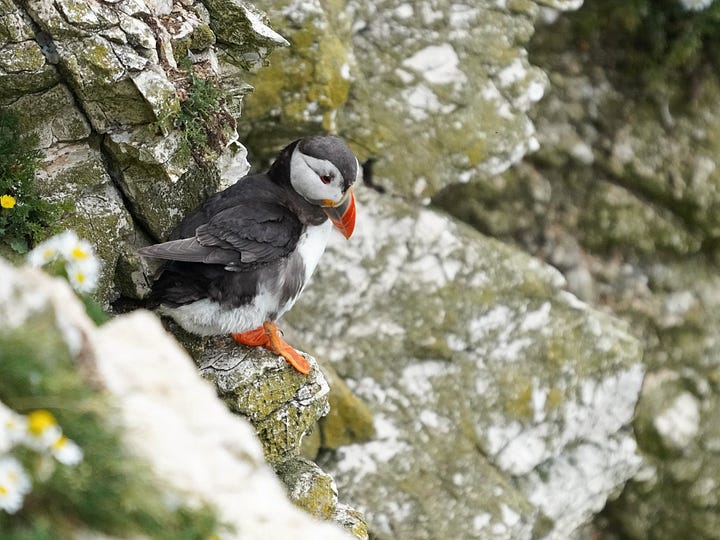
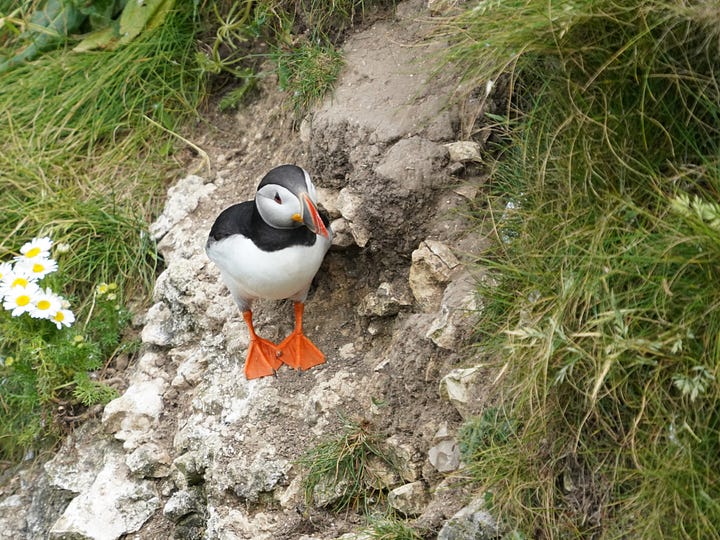
These gorgeous little characters potter around saying ‘Arr’ in an incredibly earnest voice given their clownish beak. They fly with the grace of a potato, and land haphazardly on very precarious cliff edges.
These are one of the least numerous birds here, and you get much better views from places like Skomer Island (so I hear). But despite their small numbers, they are easily the stars of the show.
Gannets
I have a soft spot for these beautiful birds. Their wings have a span of almost 2m and they come to a sharp point. In year one, these birds are almost entirely a dark brown/black colour. Each year, they gain a little more adult plumage until their fifth year when they are a pristine white with yellow heads and black wingtips.
I believe this is a second-year bird, although it could be in its third year. I love the spotty effect as the white feathers begin to come through.
At sea, these birds are famed for their spectacular dives from 30m (100ft) into the sea to catch fish. They have protective air-sacs in their face and chest, and no nostrils, to protect them from the impact. You sometimes see them dive in huge numbers, each somehow avoiding spearing its peers despite reaching 60mph (100km/h).
But on land, they’re lumbering, waddling buffoons. They take wide steps with their enormous feet, slowly but surely somehow finding their way across treacherous rocks to their nests. And while on land, they spend a lot of time bonding with their partner, gently clacking beaks and grooming and honking together.
When I last visited in 2023, a small number of gannets had black irises instead of the usual pale blue. Studies show that this is a side effect of surviving infection with bird flu.
“Seabirds are amongst the most threatened group of birds, out of the 25 species breeding here in the UK, 24 are Red or Amber on the UK list of Birds of Conservation Concern.” – RSPB.
Given that we have two-thirds of the world’s entire population of these incredible birds, it’s reassuring to know that some can survive such an illness.
Razorbills
I have to stop myself from saying I have a soft spot for these birds, too. I have a soft spot for all birds! But the striking black plumage, delicate white ‘piping’ on their face and bright yellow-orange inner beaks are stunning. These are broad, sturdy birds that fly like bricks but look surprisingly graceful on water.
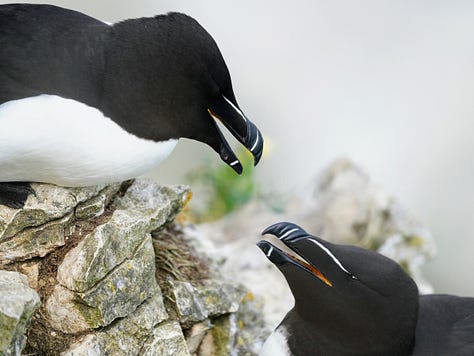
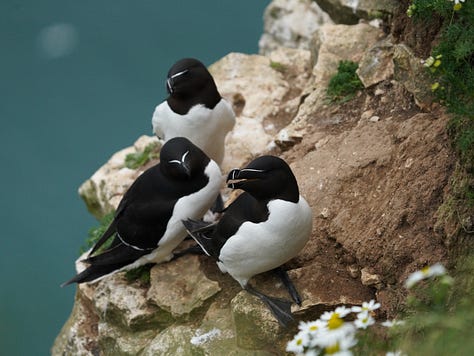
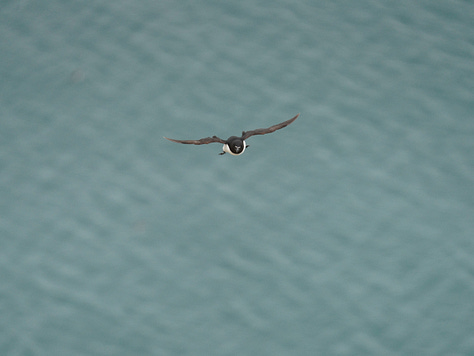
Guillemots
These, on the other hand, look delicate and narrow when compared with razorbills. Their chocolatey brown colour stands out among all the whites, blacks and greys of the other birds here. But despite their pointed beak and narrow wings, they also fly like a blunt object.
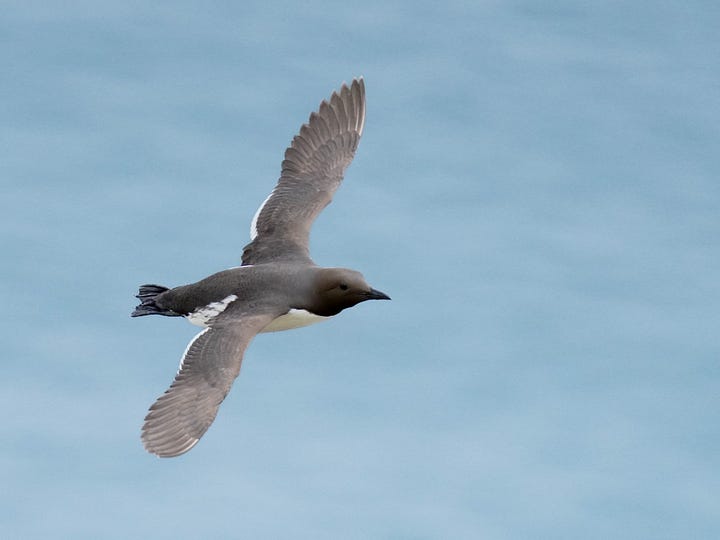
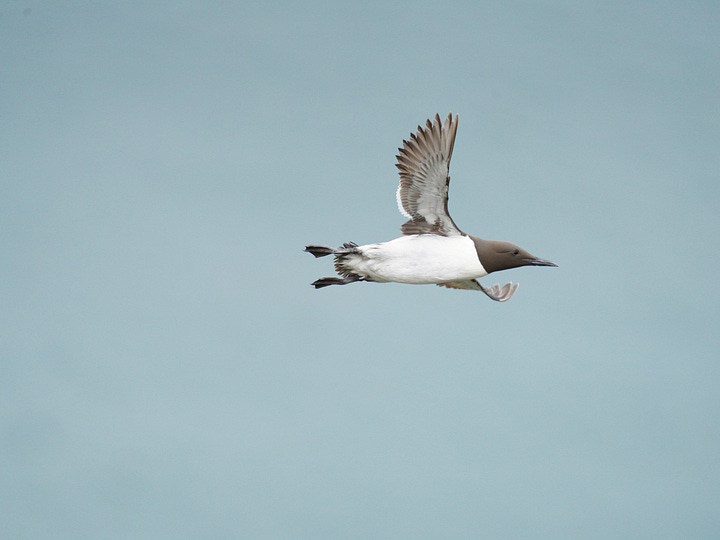
If you’re very lucky, you might spot a Guillemot with a rare colour morph – the bridled guillemot. These have long, white stripes that resemble wicked cat-eye eyeliner starting at the rear corner of their eyes.
Kittiwakes and Fulmars
I hate to lump such different birds in together, but they are both gulls and I’m running out of space! The Kittiwakes are adorable, with meek expressions and little yellow bills.
Fulmars, on the other hand, look cute until you realise that tube on top of their beak is used for spewing partially digested fish over their enemies. Yum.
Honourable mentions
Honestly, you can’t go to a big reserve like this and not mention the ‘regulars’ that bring little moments of delight. Yes, the Jackdaws. These cheeky little corvids are found along the cliff tops and unlike the crows, they’re more likely to mug you for some crumbs than they are to make off with a rare seabird check right in front of you.
At the cafe there are nesting swallows, and in the bushes near the carpark you’ll find feeders visited by tens of Tree Sparrows. Unlike the more common House Sparrow, these little cuties have a dark spot on their cheeks and the females and males look exactly the same.
And on the long walks between the cliffs and Bridlington, you might spot Meadow Pipits, Yellow Wagtails and hares. And at the base of the cliffs and in the water, you might spot the occasional Shag (yes, really). These are narrow, cormorant-like birds.
Dishonourable mentions
The Crows and Peregrine Falcons are chaos makers. I love them, and the absolute racket that starts up on the cliffs when they pass too close. But if you’re faint hearted, be sure to look away when you see a smug-looking Crow appear from the cliffs below with something in its beak. They don’t care who’s endangered, as long as their chicks are fed.
I’ll spare you photos in this section!
Fond farewell
On my last evening there, I wandered up to the cliffs to say goodbye to the seabirds and soak up the last drops of dramatic atmosphere. A pod of around 20 dolphins passed by, the first wild dolphins I’ve ever seen (and the last).
With so many species here teetering on the edge (figuratively, as well as literally), it’s hard not to wonder if you’re witnessing something that future generations won’t be lucky enough to see.
I’m looking forward to next week’s post, as I am heading to RSPB Minsmere, an incredible wetland. I’m particularly keen to find Bearded Reedlings and Bitterns (two of the most notoriously difficult to photograph birds in the country!).
In the meantime, let me know what you’ve seen while I was reminiscing about Bempton Cliffs!
PS: I’m a freelance writer, helping purpose-led organisations gain support, momentum and income. Know someone who might be interested? You can forward them my website:
Wild This Week will always be free – but if you’d like to show your support you can always buy me a coffee!




